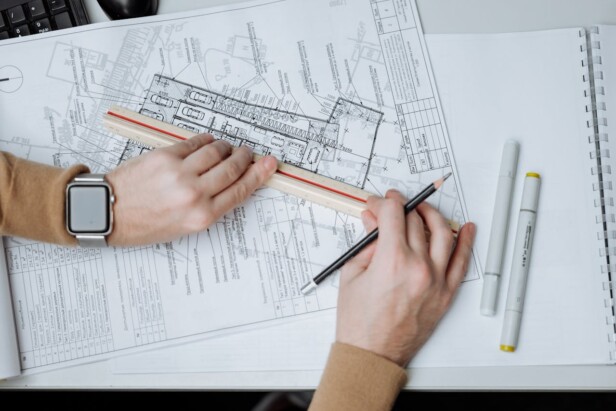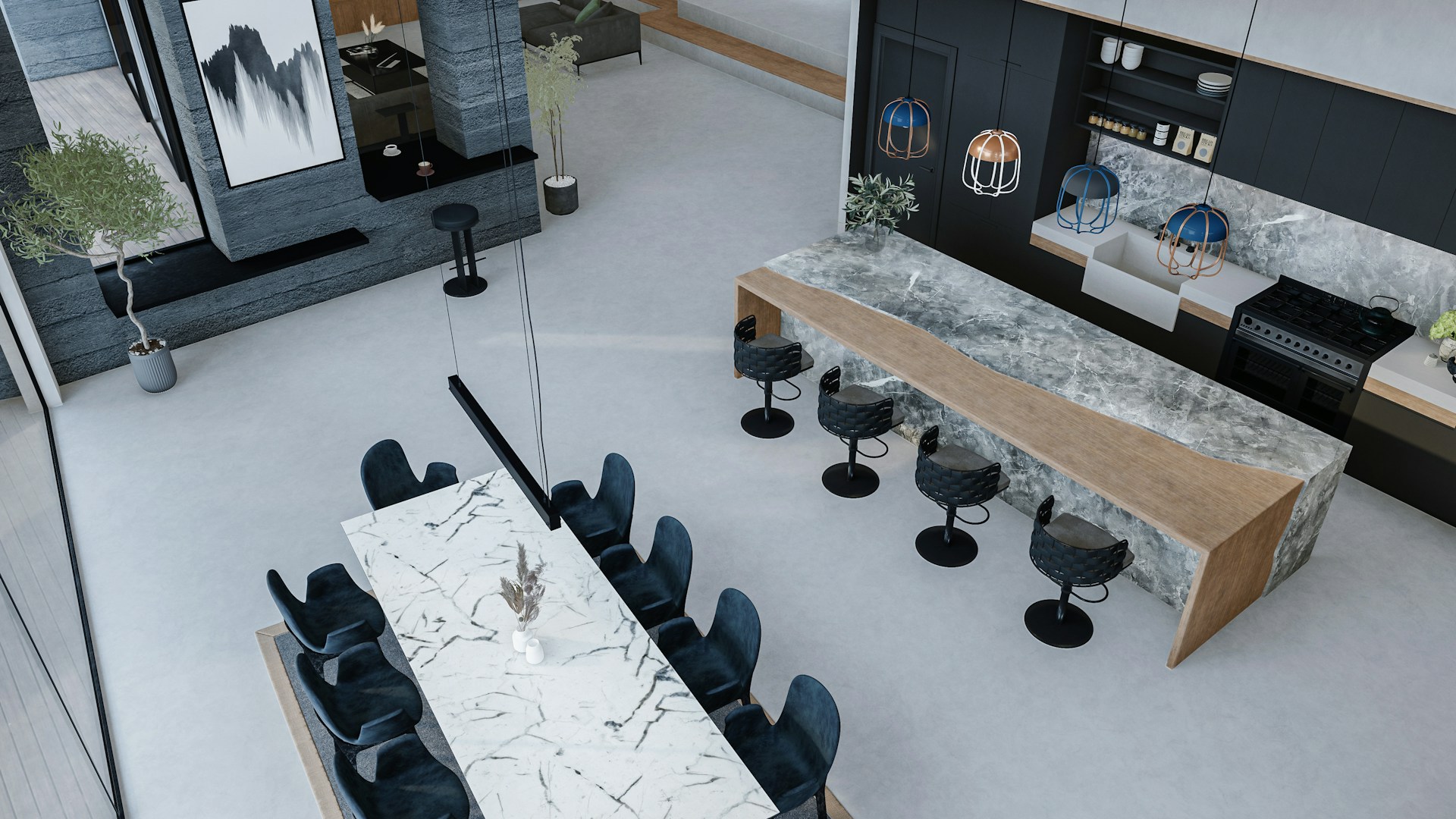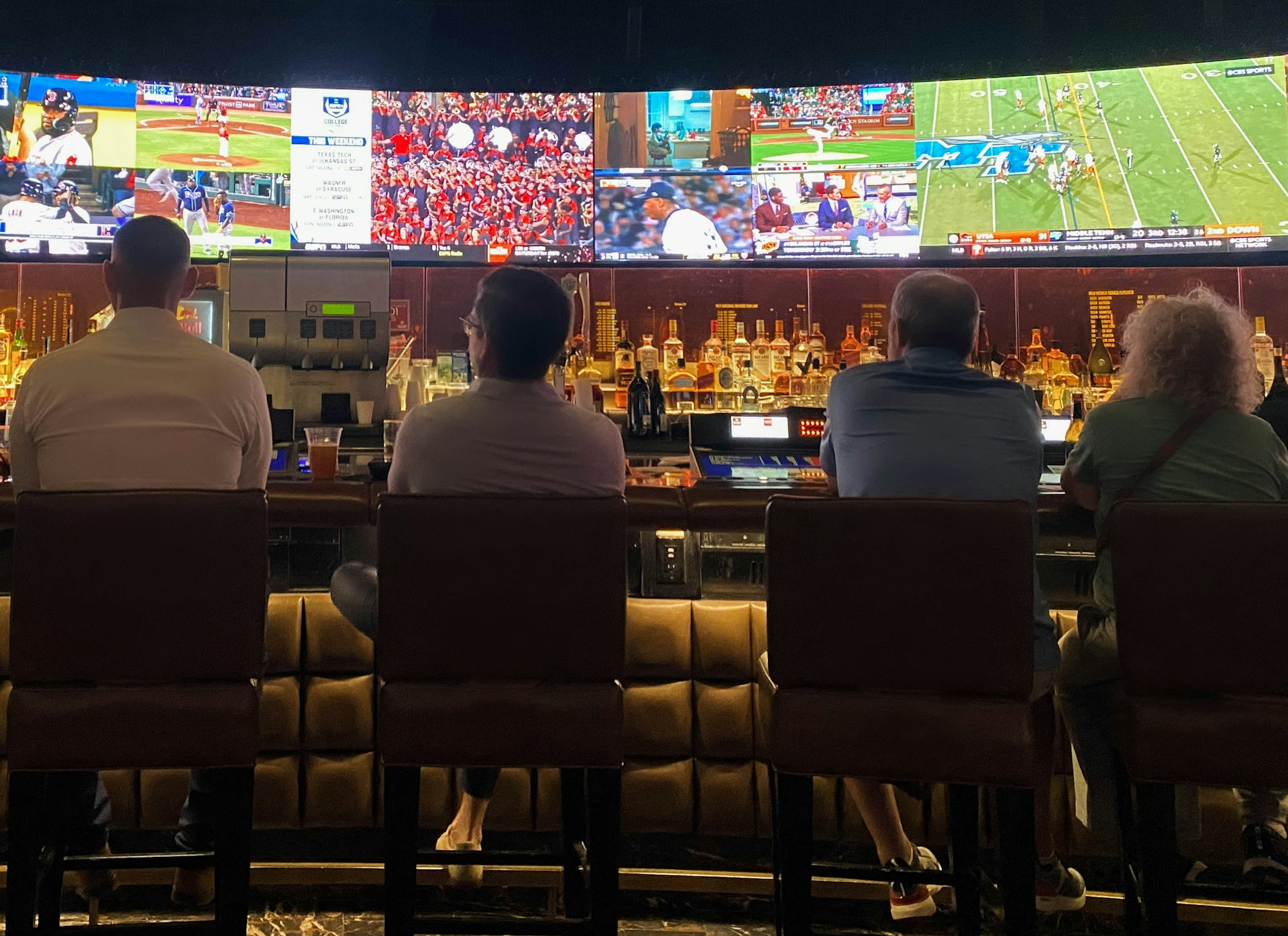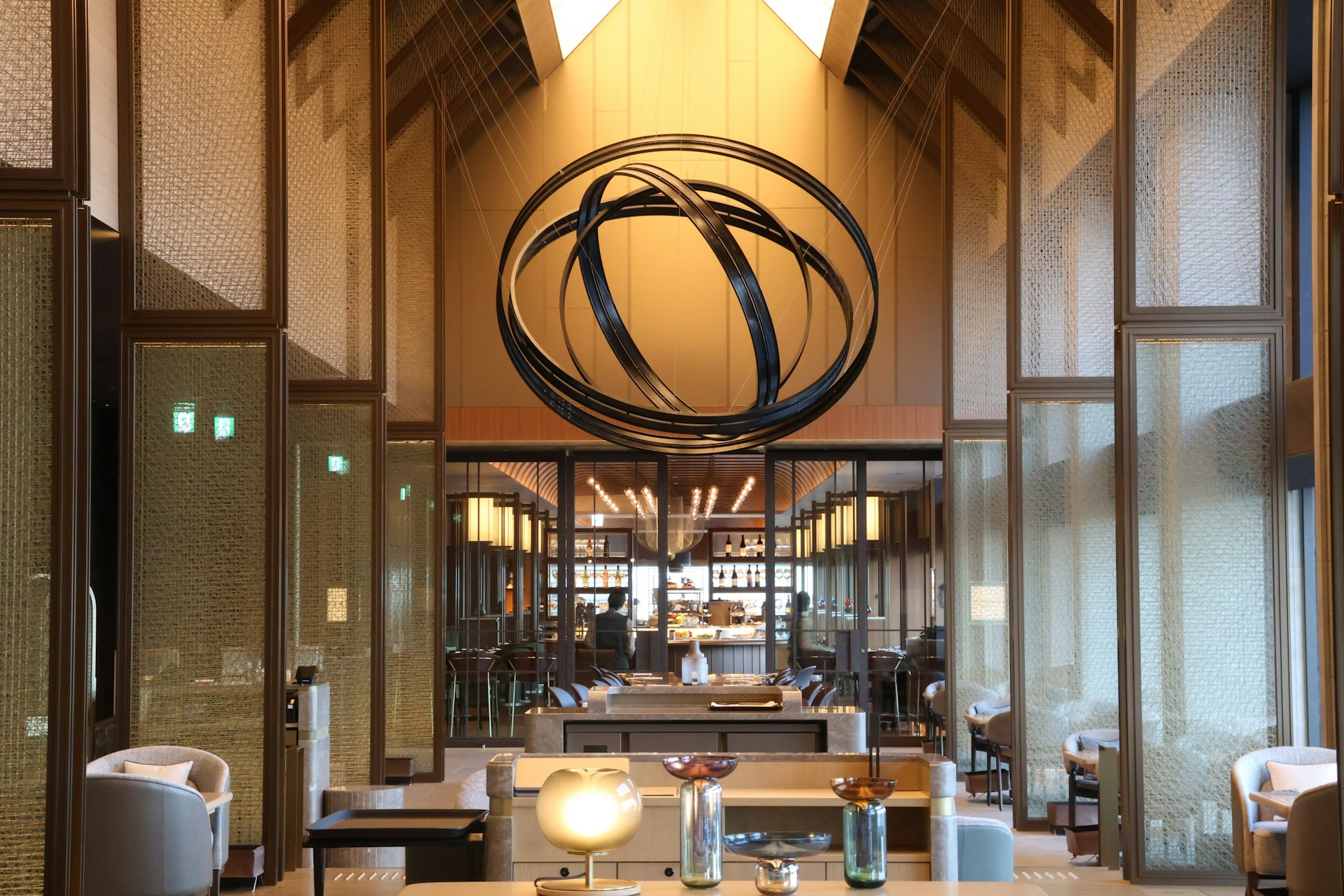Restaurant construction costs in Dallas average $88.40 per square foot, with project timelines stretching 35 weeks or more. These numbers reflect the complexity of creating spaces where design directly shapes customer experience and operational efficiency.
Selecting a restaurant architect in Dallas affects every aspect of your project from opening day revenue to long-term profitability. The right architect balances ambiance with buildability, ensuring code compliance while maintaining budget discipline across projects that typically range from $200,000 to $1.35 million for standard concepts.
What Should You Define Before Contacting A Dallas Restaurant Architect?
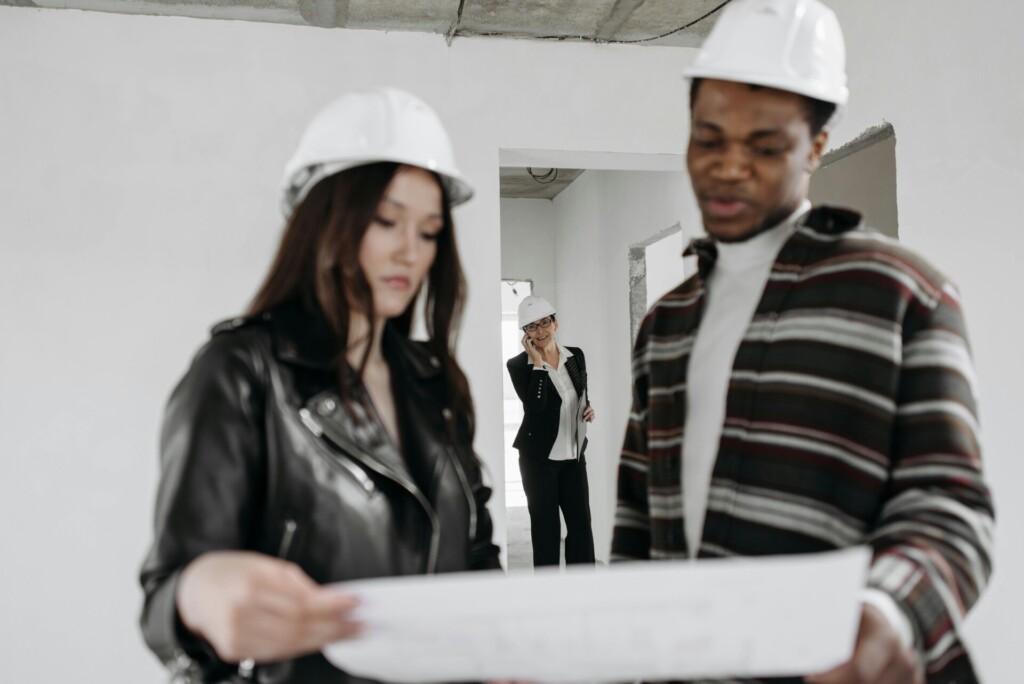
Your target clientele shapes every design decision from seating layouts to lighting intensity. Fine dining guests typically seek privacy, quieter environments, and subdued lighting that encourages longer stays and intimate conversations. These patrons value spacious table arrangements and sophisticated color palettes that complement premium dining experiences.
Family-focused concepts require different considerations entirely. Brighter colors and lively lighting create welcoming environments for children and parents alike. Durable furnishings and easy-to-clean surfaces become priorities when accommodating families with young children.
Brand Atmosphere And Design Consistency
Your brand atmosphere must align with your target audience’s expectations. A casual neighborhood bistro benefits from warm, approachable colors and comfortable furnishings that encourage regular visits. Upscale establishments might emphasize rich textures, quality materials, and carefully curated art pieces that reinforce exclusivity.
Visual consistency across all elements reinforces your restaurant’s identity. Color schemes should flow naturally from entrance to dining areas, while lighting transitions should maintain the desired mood throughout different zones. Custom fixtures and signature elements can distinguish your space from competitors while staying true to your concept.
Planning For Peak Demand
Peak guest counts directly influence seating configurations and comfort standards. Restaurants must accommodate higher than expected numbers while maintaining customer comfort. We calculate maximum occupancy based on fire codes, then design layouts that feel spacious even during busy periods.
Service efficiency depends on clear sight lines between dining areas and strategic placement of server stations. Kitchen visibility, where appropriate, can enhance the dining experience while ensuring operational workflows remain uninterrupted during peak hours.
Avoiding Design Trends That Date Your Space
Trendy design elements can quickly make restaurants appear outdated. Bold geometric patterns or highly specific color schemes tied to current fashion may look dated within months of opening. We focus on timeless materials and classic proportions that age gracefully.
Investment in quality foundational elements pays dividends over time. Solid wood tables, well-crafted lighting fixtures, and durable flooring materials withstand daily use while maintaining their appeal. Trend-conscious details should be limited to easily changeable elements like artwork, table settings, or small accent pieces.
Which Layout And Technical Factors Should Guide Your Selection?
Functional design drives successful restaurant operations. When we evaluate architecture firms, we focus on how they balance operational needs with guest comfort, ensuring every square foot serves the business effectively.
Planning Front Of House For Peak Service
Dining room layouts require careful planning around your highest volume periods. We design circulation paths that prevent bottlenecks when servers move between tables and the kitchen. Wide aisles accommodate wheelchairs and service carts while maintaining comfortable spacing between tables.
Clear sight lines from the host station to all seating areas help staff manage reservations and guest flow. Emergency exits must remain unobstructed and clearly marked. Strategic placement of service stations reduces server steps while keeping equipment discrete from guest views.
Optimizing Back Of House Workflow
Kitchen efficiency depends on the work triangle connecting food preparation zones, cooking equipment, and service areas. We position prep tables near storage areas to minimize ingredient transport time. Hot cooking equipment requires proper clearance and ventilation while staying accessible to the dishwashing area.
Storage areas need logical organization by temperature requirements and usage frequency. Receiving zones connect directly to storage without disrupting active cooking areas. The dishwashing area operates separately from food preparation but maintains easy access for dirty dish returns from the dining room.
Mechanical, Electrical, And Plumbing Coordination
MEP systems integration happens during initial design phases to avoid costly modifications later. Kitchen ventilation systems must handle heat and grease removal while meeting local exhaust requirements. Electrical capacity plans for peak equipment loads including ovens, refrigeration, and lighting systems.
Plumbing layouts account for prep sinks, dishwashing equipment, and grease interceptors. We coordinate these systems with structural requirements and local utilities. Proper planning prevents service disruptions and ensures compliance with health department standards.
Safety And Environmental Controls
Fire safety systems require strategic placement throughout the kitchen and dining areas. Automatic fire suppression systems protect cooking equipment while manual extinguishers remain accessible. Slip-resistant flooring prevents accidents in high-traffic areas, particularly around dishwashing and food preparation zones.
Task and ambient lighting creates safe working conditions while enhancing the dining atmosphere. Acoustic design controls noise transfer between kitchen and dining areas. We specify durable materials that withstand heavy use while supporting your brand image and maintenance requirements.
How Should Branding, Customer Flow, And Technology Shape Your Brief?
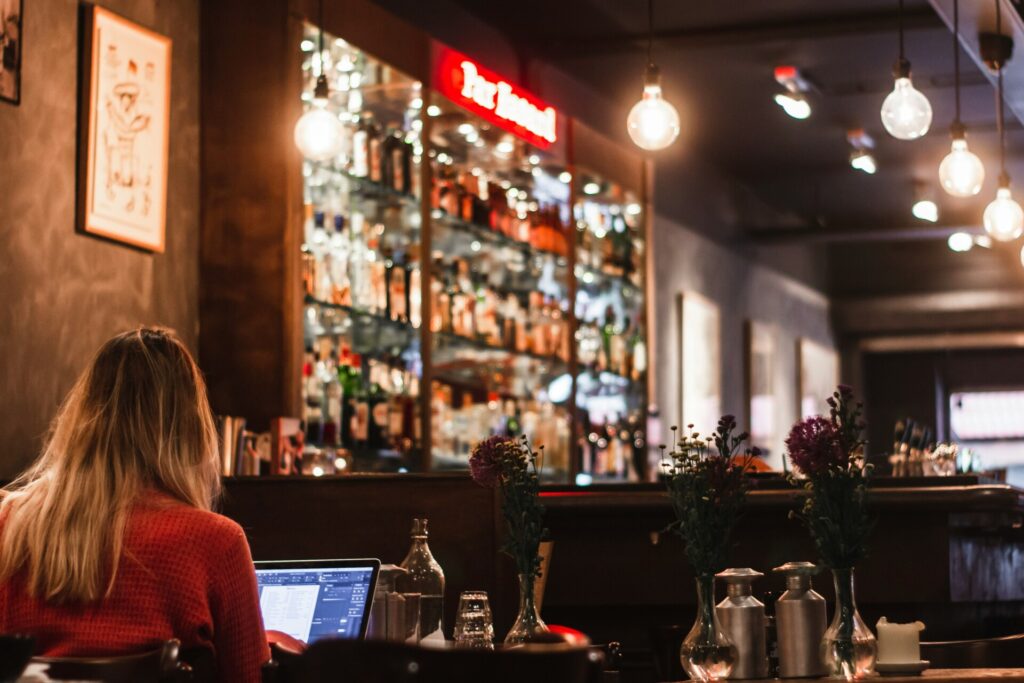
Your restaurant’s visual identity extends far beyond menu graphics and signage. We plan spaces where color palettes, finishes, and signature elements create cohesive environments that reinforce your brand story. Custom murals, unique lighting fixtures, or distinctive bar features become conversation starters that guests remember and share.
The journey from street to seat defines your customer experience. We design welcoming entrances that set expectations from the first impression. Host stations position naturally within sight lines while waiting areas accommodate peak times without crowding circulation paths.
Strategic Placement Of Essential Zones
Restroom accessibility requires careful planning to serve guests efficiently without interrupting dining flow. We position these facilities along natural circulation routes, ensuring code compliance while maintaining privacy and convenience. Proper placement reduces staff disruption and keeps service areas clear.
Order pickup zones have become essential for modern restaurant operations. We integrate these spaces near entrances for delivery driver convenience while separating them from dining traffic. Clear sight lines to pickup counters help staff coordinate orders efficiently during busy periods.
Bar Design And Social Dynamics
Bar layouts balance service workflows with social interaction patterns. We align bartender stations with inventory access, POS terminals, and glass storage to minimize movement during service. Counter heights, seating arrangements, and standing areas accommodate different guest preferences and group sizes.
Social zones require strategic planning around conversation acoustics and sight lines. Bar guests often want to interact with bartenders and other patrons, so we design spaces that encourage engagement while maintaining comfortable personal space.
Technology Integration Throughout Service Areas
Modern restaurants rely on integrated technology systems for smooth operations. We plan POS-ready server stations throughout dining areas, reducing order entry time and improving accuracy. These stations connect seamlessly with kitchen display systems and payment processing.
Guest charging access has become a standard expectation. We incorporate discreet power outlets near seating areas and integrate USB ports into table designs where appropriate. Smart controls for lighting and climate allow staff to adjust ambiance quickly for different service periods or events.
Flexible seating solutions accommodate changing business needs. Modular furniture systems and moveable partitions let you reconfigure spaces for private events, seasonal capacity changes, or special dining formats. We plan these systems during initial design to ensure proper power, data, and structural support.
Outdoor Dining Considerations
Outdoor spaces require weatherproofing strategies that extend the usable season. We integrate heating and cooling solutions that blend with your design aesthetic while meeting safety codes. Noise management becomes critical in urban environments, requiring sound barriers or strategic landscaping.
Covered areas need proper drainage, wind protection, and flexible enclosure options. We plan outdoor spaces that can transition between fully open, partially enclosed, and weather-protected configurations as conditions change throughout the year.
What Dallas-Specific Due Diligence Helps You Compare Architects?
Local Permitting And Code Compliance Expertise
Ask prospective architects about their track record with Dallas permitting processes and local code compliance. A seasoned team understands the city’s specific requirements for restaurant projects and can navigate inspections efficiently. They should demonstrate familiarity with Dallas fire codes, ADA compliance standards, and health department regulations that govern commercial kitchens.
Request examples of recent restaurant projects where they successfully managed the permitting timeline. Architects with strong local relationships often secure approvals faster, keeping your project on schedule. We see significant delays when teams underestimate Dallas-specific requirements or lack established connections with local officials.
MEP Coordination And Fire Suppression Experience
Evaluate how potential architects coordinate mechanical, electrical, and plumbing systems with kitchen operations and dining comfort. Restaurant MEP systems require precise integration between ventilation, fire suppression, electrical loads for equipment, and plumbing for prep areas. Ask about their approach to kitchen exhaust design, grease management, and fire suppression integration.
Skilled architects work closely with MEP engineers from project start to avoid costly conflicts during construction. They understand that restaurant mechanical systems face unique challenges, from managing cooking odors to ensuring adequate power for high-demand equipment. Look for teams that can demonstrate successful coordination of complex restaurant MEP installations.
Operational Efficiency And Seating Turnover Planning
Examine their experience balancing restaurant ambiance with operational efficiency. Effective architects understand how design choices affect seating turnover, staff workflow, and acoustic comfort during peak service. They should explain how their layouts support your target table turns while maintaining the dining experience you want to create.
Ask for specific examples of how they’ve addressed acoustics in busy restaurants. Poor sound management can drive away customers and create stressful work environments for staff. The right architect knows how to specify materials and design elements that control noise while supporting your brand atmosphere.
Signage And Exterior Image Strategies
Discuss their approach to signage planning and exterior image development. Dallas has specific regulations governing commercial signage, and your architect should understand zoning restrictions, visibility requirements, and permit processes. They need to balance brand visibility with code compliance and neighborhood character considerations.
Review their portfolio for exterior designs that create strong street presence while meeting local aesthetic guidelines. Successful restaurant exteriors in Dallas often require coordination with landlords, city planners, and sometimes historic preservation requirements. Your architect should navigate these complexities while protecting your brand identity.
Schedule Management Against Local Benchmarks
Compare their schedule management approach against typical Dallas commercial construction timelines. Restaurant projects in the area face specific challenges, from weather delays to material availability issues. Ask how they build buffer time into schedules and coordinate with construction teams to maintain momentum.
Evaluate their experience with accelerated construction schedules, a common challenge in competitive restaurant markets. Teams that understand local construction coordination can help you open faster while maintaining quality standards. We work with architects who build realistic schedules that account for Dallas-specific factors like summer heat impacts and seasonal material delays.
Budget Alignment With Area Cost Benchmarks
Discuss how their designs align with current Dallas construction cost benchmarks for restaurant projects. Experienced architects understand local material costs, labor rates, and specialty contractor availability. They should provide realistic cost guidance early in design development to prevent budget surprises during construction.
Ask about their experience with value engineering and cost control strategies. The best architects help you prioritize spending on elements that directly impact customer experience and operational efficiency. They know where to invest your budget for maximum return and where you can reduce costs without compromising your concept.
Sustainability And Material Durability Focus
Evaluate their approach to sustainable design and durable material selection. Dallas restaurants face intense use patterns and require finishes that maintain appearance under heavy traffic. Ask about their experience specifying materials that balance sustainability goals with operational durability and maintenance requirements.
Review their knowledge of energy-efficient systems that reduce operating costs while meeting sustainability objectives. Smart architects help you select equipment and systems that minimize environmental impact while supporting long-term profitability. Look for teams that can demonstrate successful integration of sustainable features in working restaurant environments.
Conclusion And Next Steps
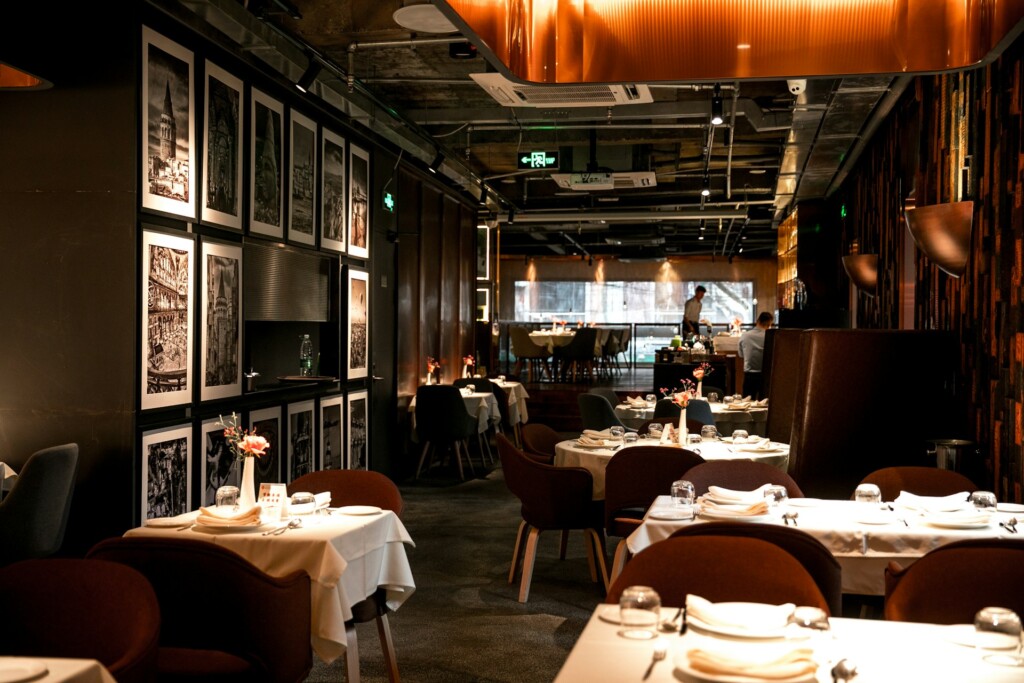
A clear vision, functional layouts, and code-aware planning will help you select the right restaurant architect in Dallas. Define your audience and brand atmosphere early, whether targeting fine dining privacy or family-friendly energy. Plan front-of-house and back-of-house workflows that support efficient service while maintaining guest comfort. Address mechanical, electrical, and plumbing coordination from the start, along with fire safety systems and acoustical design that matches your concept.
Compare firms on local permitting experience and their track record with Dallas Chapter 17 compliance requirements. Look for architects who demonstrate clear collaboration with construction teams and understand typical Dallas commercial timelines averaging 35 weeks for restaurant projects. Review their relevant restaurant work, confirm budget alignment with current area cost benchmarks, and verify their approach to sustainable material selection. Shortlist candidates based on scope definition clarity and schedule management capabilities before making your final selection.
Contact EB3 Construction to coordinate your restaurant architect selection with experienced construction partners who understand Dallas permitting and delivery requirements.

